Child Tonsillitis Pain Relief Calculator
Recommended Actions
When your little one wakes up whining about a sore throat, the panic can hit fast. Tonsillitis can turn a normal day into a marathon of tears, sleepless nights, and endless Googling. The good news? Most cases are viral and can be managed at home with the right mix of medication, comfort tricks, and smart monitoring. Below you’ll find a step‑by‑step plan that lets you calm the pain, keep the fever in check, and feel confident that you’ve covered the basics.
Quick Wins (TL;DR)
- Give age‑appropriate ibuprofen or acetaminophen every 6‑8hours.
- Offer warm fluids - broth, tea with honey, or lukewarm water - every hour.
- Use a cool‑mist humidifier in the bedroom.
- Let your child rest; limit talking and noisy play.
- Call the pediatrician if fever >39.5°C, difficulty breathing, or pain lasts more than 3days.
What Is Tonsillitis?
Tonsillitis is an inflammation of the two lymph‑filled tissue pads at the back of the throat. It’s most often caused by viruses (like the common cold or flu) but can also stem from bacterial infections such as Streptococcus pyogenes. In children, the swollen tonsils can turn an ordinary cough into a painful, scratchy sensation that makes swallowing feel like chewing sand.
Spotting the Signs in Kids
Kids can’t always say, “My throat hurts,” so watch for these clues:
- Red, swollen tonsils - sometimes with white or yellow spots.
- Frequent throat clearing or coughing.
- Difficulty swallowing food or drink.
- Ear pain (the throat and ear share nerve pathways).
- Fever, chills, or a general feeling of being “off.”
If you notice these symptoms together, it’s likely tonsillitis and you can move straight to relief tactics.
When to Call a pediatrician
Most viral cases smooth out in 5‑7days, but certain red flags demand professional care:
- Fever stays above 39.5°C (103°F) for more than 48hours.
- Severe pain that prevents drinking or leads to dehydration.
- Difficulty breathing, drooling, or a “hot potato” voice.
- Rash, joint pain, or swelling that points to a bacterial infection.
- Symptoms persisting beyond 3days without improvement.
In bacterial cases, a short course of antibiotics may be prescribed, but the majority of kids recover with supportive care alone.
Home‑Based Pain Relief Strategies
Combine medication with comfort measures for fastest relief.
1. Age‑Appropriate Analgesics
Ibuprofen (200mg for toddlers, 400mg for older children) or acetaminophen offers reliable pain control and fever reduction. Give every 6‑8hours, never exceeding the daily maximum. Always use the child‑specific dosing device that comes with the bottle.
2. Warm, Soothing Fluids
Warm broth, herbal tea, or lukewarm water makes the throat feel less raw. Adding a teaspoon of honey (only for children over 12months) coats the lining and has mild antibacterial properties. Aim for a few sips every hour; hydration keeps the mucus thin and eases swallowing.
3. Cool‑Mist humidifier
Dry air amplifies throat pain. A bedside humidifier set on cool mist adds moisture, reducing irritation and helping any fever‑induced sweating feel more comfortable. Clean the unit daily to prevent mold growth.
4. Rest and Vocal Rest
Kids naturally want to run, shout, and play, but vocal strain prolongs swelling. Encourage quiet activities like drawing, puzzle‑solving, or reading aloud for short periods. A nap or early bedtime speeds up immune recovery.
5. Soft, Easy‑to‑Swallow Foods
Pureed fruits, yogurt, oatmeal, and scrambled eggs slide down without scraping the sore patches. Avoid crunchy, salty, or acidic foods (chips, citrus, tomato sauce) until the pain eases.
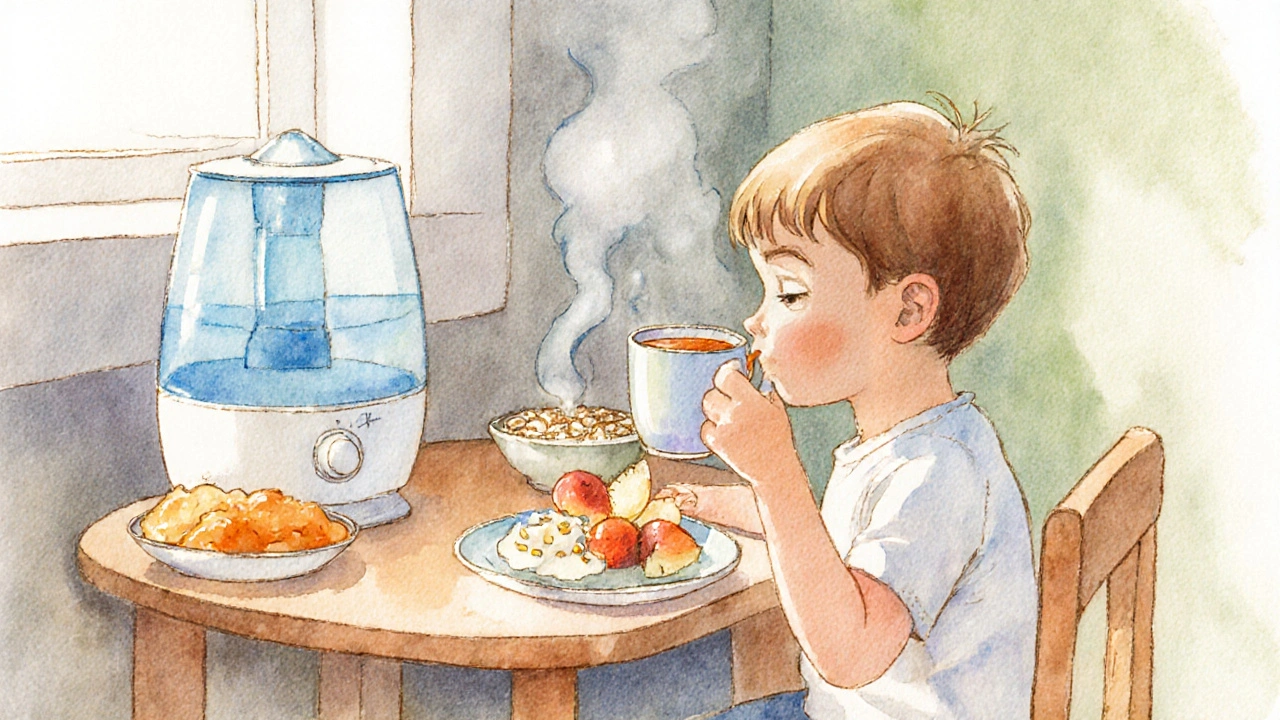
Natural Adjuncts Worth Trying
These aren’t replacements for meds but can add comfort:
- Chamomile or ginger tea: Mild anti‑inflammatory effect.
- Salt‑water gargle (¼tsp salt in 240ml warm water) - only for kids who can safely spit it out.
- Throat lozenges designed for children (often contain mild menthol or honey). Ensure the child can’t choke.
- Ice chips or frozen fruit puree for a numbing effect.
Monitoring Fever and Hydration
Use a digital thermometer to track temperature every 4‑6hours. If the fever spikes above 39°C (102°F) and medication isn’t helping, re‑dose according to the label and keep a hydration log - aim for at least 1ml of fluid per kilogram of body weight each hour.
Post‑Recovery Care: Reducing Future Episodes
Even after the pain fades, the tonsils remain a gateway for germs. Simple habits cut down repeat infections:
- Teach proper hand‑washing before meals and after using the restroom.
- Limit close contact with anyone who’s coughing or sneezing.
- Keep your child’s bedroom at a comfortable humidity (40‑60%).
- Schedule a routine check‑up; in rare chronic cases, an ENT specialist may discuss tonsil‑size reduction.
Quick Reference Checklist
- ✅ Give ibuprofen or acetaminophen on schedule.
- ✅ Offer warm fluids with honey (if age‑appropriate) every hour.
- ✅ Run a cool‑mist humidifier overnight.
- ✅ Keep a hydration log - 1ml/kg/hr.
- ✅ Watch for red‑flag symptoms; call the pediatrician if any appear.
Comparison of Common Relief Options
| Option | Primary Benefit | Onset of Relief | Age Suitability |
|---|---|---|---|
| Ibuprofen | Pain & fever reduction | 30‑45min | 6months+ |
| Acetaminophen | Gentle pain relief | 30‑60min | 2months+ |
| Honey‑sweetened tea | Soothes throat, minor antibacterial | Immediate | 12months+ |
| Cool‑mist humidifier | Moistens airway, reduces irritation | Within minutes | All ages |
| Throat lozenges (child‑safe) | Provides numbing, mild antiseptic | Immediate | 4years+ |
Frequently Asked Questions
How long does tonsillitis usually last in children?
Most viral tonsillitis cases improve within 5‑7days with proper home care. Bacterial forms may feel worse for a day or two but typically clear up after a short course of antibiotics.
Can I give my child ibuprofen if they already have a fever?
Yes. Ibuprofen lowers both pain and temperature. Follow the weight‑based dosing instructions on the label and avoid mixing with other NSAIDs.
Is honey safe for a 10‑month‑old with a sore throat?
No. Honey can contain spores that cause infant botulism. Wait until the child is at least 12months before adding honey to drinks.
When should I consider a tonsillectomy?
If a child experiences more than seven episodes of tonsillitis in a year, or has chronic breathing problems, an ENT specialist may recommend removal. It’s a decision made after thorough evaluation.
Can a cold compress help reduce throat swelling?
A cold compress on the neck can provide temporary comfort, but the primary methods are medication, hydration, and humidified air. Use it only as a supplemental soothing tool.
By pairing proven medicines with simple home tricks, you’ll keep your child’s tonsillitis pain manageable and speed up the road to feeling normal again. Keep an eye on the red‑flag signs, stay hydrated, and don’t hesitate to call the pediatrician if anything feels off. You’ve got this!
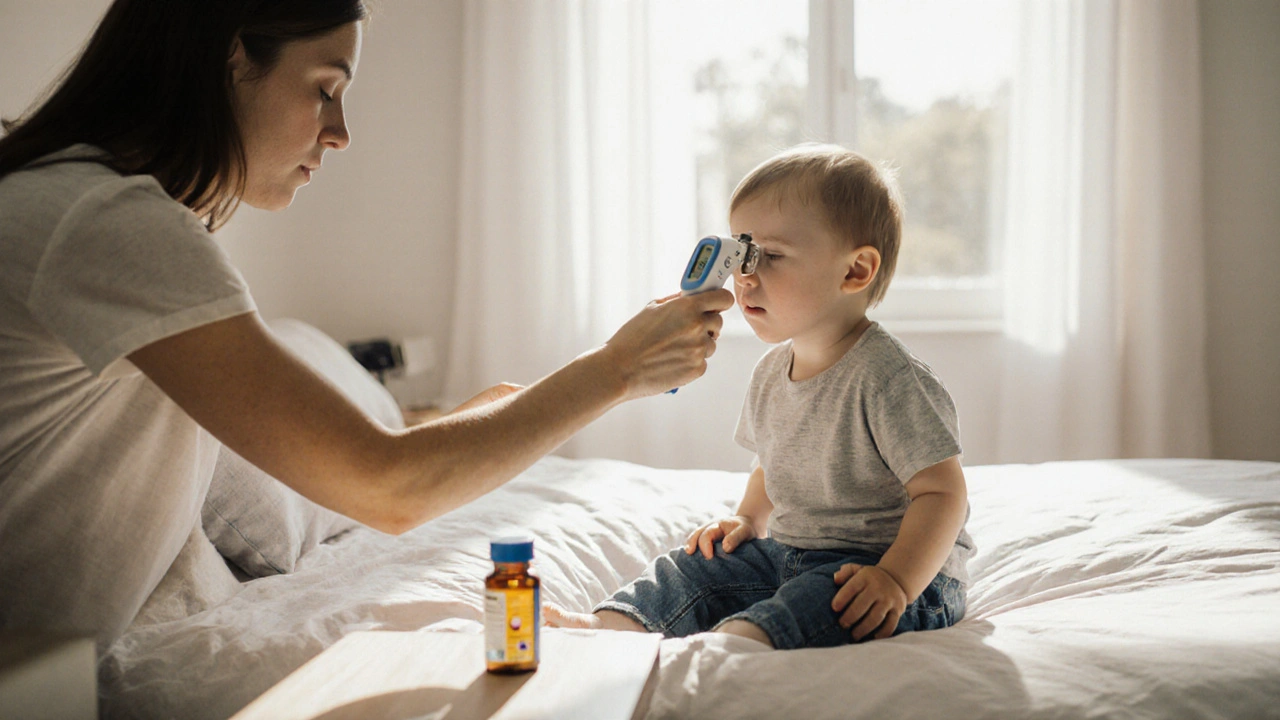

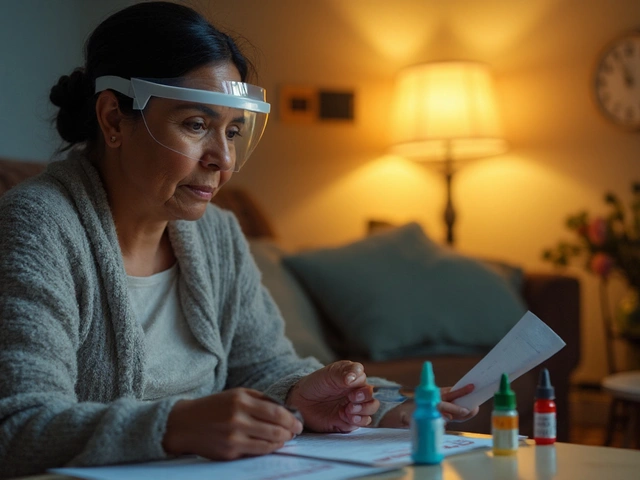



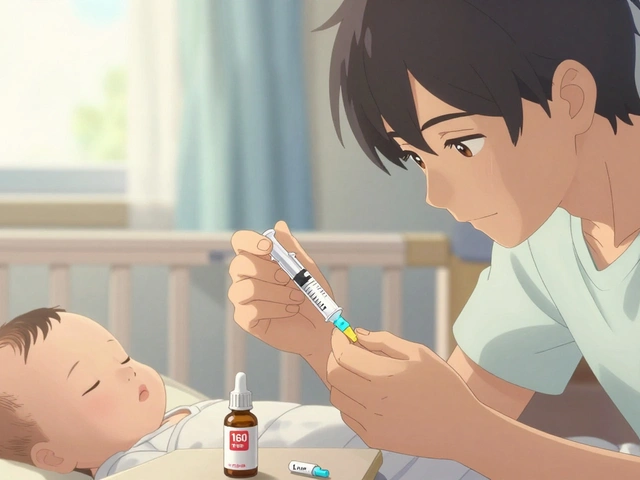

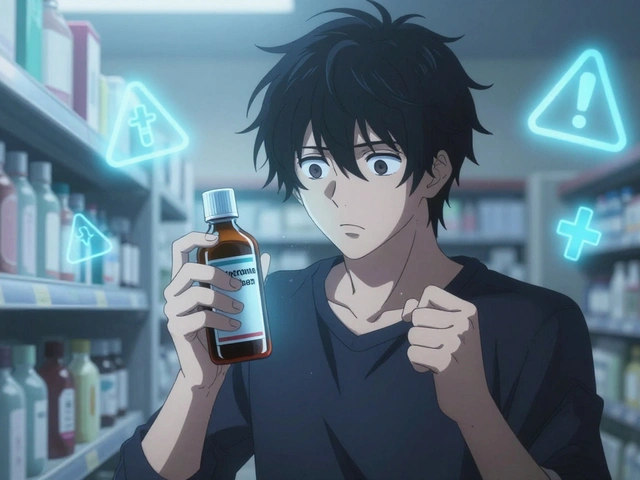
Sabrina Goethals
Wow, I just read through that tonsillitis guide, and honestly, it's a solid mix of science and mother‑instinct, you know, the kind of stuff that makes me feel a bit less panicked, especially the part about using a cool‑mist humidifier, which is a game‑changer, plus the reminder to keep a hydration log, that's gold, and the honey‑sweetened tea tip, even though I'm not a big fan of honey, it sounds like a sweet hack, lol, keep it up!
Sudha Srinivasan
Skipping the honey for babies under one is not optional, it's a safety rule.
Jenny Spurllock
The recommendation to monitor fever every 4‑6 hours is a practical reminder.
Bart Cheever
The article is useful but could be trimmed; some tables repeat information.
Trinity 13
Alright, listen up, because dealing with a kid’s sore throat isn’t just about handing out meds and hoping for the best, it’s a battle of comfort, science, and parental sanity, first off, you’ve already nailed the basics: ibuprofen or acetaminophen on schedule, that’s the frontline soldier against pain and fever, but let’s talk about why the “warm fluids every hour” mantra works – warm liquids increase blood flow to the throat, they soothe irritated mucosa, and they keep the child from dehydrating, which is crucial because dehydration can prolong the infection, next, the cool‑mist humidifier isn’t just a fancy gadget; it actually raises ambient humidity, which reduces the evaporation of mucus and eases that raw feeling, clean it daily or you’ll invite mold, a hidden enemy, also, the “rest and vocal rest” tip is more than a suggestion – the tonsils are lymphatic tissue that swells when overused, so limiting shouting can speed up recovery, now, the table comparing OTC meds and natural aids is gold, because it lets parents weigh speed of relief against safety, especially for younger kids, and the honey‑sweetened tea note is perfect for kids over a year old, but remember the botulism risk for infants, that’s non‑negotiable, the article also wisely advises a hydration log of 1 ml per kilogram per hour, that metric helps prevent hidden dehydration, and the red‑flag checklist is a lifesaver – fever over 39.5 °C, breathing difficulty, or no intake of fluids for several hours warrant a call to the pediatrician, finally, the post‑recovery habits like hand‑washing and bedroom humidity control are the kind of preventive measures that keep the cycle from repeating, so in short, this guide packs a punch of practical, evidence‑based steps that any parent can follow without a medical degree, and that’s exactly what we need in a crisis, keep it up, and stay hydrated!
Rhiane Heslop
We must prioritize proven remedies over trendy hacks; simple measures like ibuprofen, humidifier use, and proper hydration are enough to get kids through tonsillitis
Dorothy Ng
The guide outlines a clear progression from medication to comfort measures, ensuring each step is backed by medical guidance
Justin Elms
Great job on covering everything from meds to soothing teas, this will help parents feel confident and less stressed while caring for their little ones
Jesse Stubbs
Honestly, the article feels like a laundry list of obvious tips, nothing groundbreaking here
Eric Parsons
The inclusion of weight‑based dosing for ibuprofen and acetaminophen reflects best practice, and the reminder to use child‑specific dosing devices mitigates dosing errors. Additionally, the suggestion to avoid acidic foods aligns with reducing further throat irritation. The emphasis on monitoring for red‑flag symptoms such as persistent high fever or respiratory distress is essential for timely medical intervention. Overall, the article presents a comprehensive, evidence‑based approach suitable for caregivers.
kuldeep jangra
When you’re staring at a screaming child with a sore throat, it can feel like you’ve been thrown into the deep end of parenthood without a life jacket, but this guide hands you that very life jacket in the form of step‑by‑step actions; start with the safe, age‑appropriate analgesics, because pain control is the cornerstone of comfort, then move to hydration-think soups, warm teas with honey (once the child is over one year old), and even ice chips if they need a soothing chill. The humidifier tip isn’t just a nice‑to‑have, it creates an environment where the throat stays moist, which can reduce pain spikes. Remember, the goal is to keep the child drinking enough to meet the 1 ml per kilogram per hour guideline, and you can track this on a simple chart. If you notice any of the red‑flag signs-fever soaring above 39.5 °C, difficulty breathing, or a “hot potato” voice-don’t wait; call the pediatrician right away. By following these structured steps, you turn a chaotic night into a manageable routine, and that confidence can make all the difference for both you and your child.
harry wheeler
Balancing medical advice with home comfort measures creates a holistic approach that respects both science and parental intuition
faith long
I feel your frustration when your kid is stuck hoarse and you’re juggling work, the pain they endure is heartbreaking, and while the guide gives solid tips, let’s be blunt-the healthcare system often under‑communicates the importance of simple home care, so you’ve got to be your child’s advocate and enforce the fluid schedule like a drill sergeant, don’t let anyone tell you that a few sips of water are enough when the recommendation says hourly intake, push for that humidifier, demand that the pediatrician explains dosing in plain language, and when the fever spikes, act decisively with medication, no hesitation, because every minute counts in easing that burning sensation, and if the doctor dismisses your concerns, find another professional who respects your diligence. You deserve respect, and your child deserves relief, so own this process and don’t apologize for being thorough.
Danny Wakefield
Did you know that some over‑the‑counter cough syrups contain ingredients that can actually dry out the throat further? There’s talk that big pharma pushes unnecessary meds to keep us buying, while simple humidity and honey do the real work. Stay skeptical, read labels, and trust natural comfort hacks that have been around for centuries.
Samantha Dean
The article adeptly integrates physiological understanding of tonsillar inflammation with pragmatic caregiving strategies, thereby bridging theory and practice in a commendable manner.
Vanessa Peters
While the guide is thorough, it glosses over the socioeconomic barriers families face when accessing humidifiers or quality medication, a glaring omission that undermines its universality.
Suzan Graafstra
In the theater of childhood ailments, tonsillitis is but a fleeting act, yet our responses echo the larger saga of human resilience against unseen microbial foes.
Kripa Mohamed
People who ignore red‑flag symptoms are basically playing with fire.